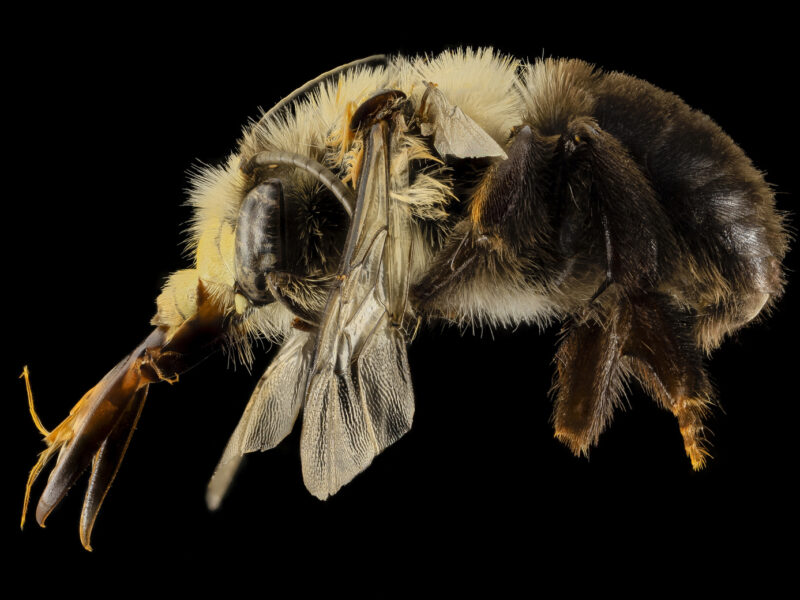

It was late April when they started to appear. In several areas around the Southampton dog park, what I thought at first were ant hills — little mounds of sand, each with a turreted hole in the top. But someone pointed out that the holes were too big for ants, and we didn’t see the constant comings and goings one usually sees with ant colonies.
Then someone else called the dog park committee to complain that there were bees near a pair of benches and someone should really spray to get rid of them.
I’m quite happy to report that the dog park committee is not a fan of spreading poison around a park designed to be a safe place for dogs and their humans, so spraying the bees was never even considered.
But the confluence of the sand mounds and the bee alert led to an answer as to what was really going on. It turned out that the mounds were the work of miner bees, a type of native bee with a pretty amazing life journey.
While most of the attention goes to honeybees, New York State is home to around 400 species of native bees. Those include the fuzzy bumblebees that I think of as flying teddy bears, and the often-unwelcome carpenter bees, known for burrowing into wood to lay their eggs. But there are many other species of native bees, most of them solitary, that fly under the radar, so to speak. These include leafcutter bees, sweat bees, and several kinds of miner bees.
In the early spring, male and female miner bees emerge from their burrows. Smaller and chubbier than honeybees, many varieties look like miniature bumblebees. The males sport a distinctive growth of hair on their faces, between their eyes and mouth. That growth has earned them the nickname “mustache bees” and carries pheromones that serve to attract the female of the species. And really — who can resist a nice mustache?
As with most species of bees, the females do most of the work. The males emerge first, usually before the region’s trees are even in full leaf. The females emerge a few days later and mating ensues. Sadly, for the boys, it ends for miner bees just as it does for honeybees — mating is the last thing they do, as it results in the amputation of the bee’s naughty bits — the endophallus — and death.
After mating, the female looks for a welcoming spot to build her nest, preferring sandy soil or soft dirt. Despite being solitary in terms of not having a communal nesting space, miner bees can often be found sharing a neighborhood, possibly because a suitable environment attracts multiple bees, or maybe because they deliberately prefer nesting close together. In the case of the dog park, groups of nests were found throughout the park.
Once a female miner bee finds the right locale, she burrows a main tunnel as far as a foot into the ground. She then creates several short side tunnels that branch off from that main one. She finishes off her construction project by lining the tunnels with a waxy glandular secretion that she rubs along the edges, creating a solid, waterproof wall.
When construction is complete, she gathers enough nectar and pollen to build a little nutrition ball in each side tunnel, which will serve as food for the newly hatched larvae. She then lays one egg on top of each of those balls. In her final act of motherhood, the miner bee seals off each side tunnel so her offspring each has a room of its own, so to speak.
After about five days, the eggs hatch into larvae, which dine on the pollen mixture for about three weeks. After that, the youngsters go into a pupal stage, where they spend the next few months, still in their tunnels, waiting to emerge in the spring.
Meanwhile, her work done, mama miner bee dies within a few days. And the cycle of life begins its next revolution.
 More Posts from Lisa Daffy
More Posts from Lisa Daffy